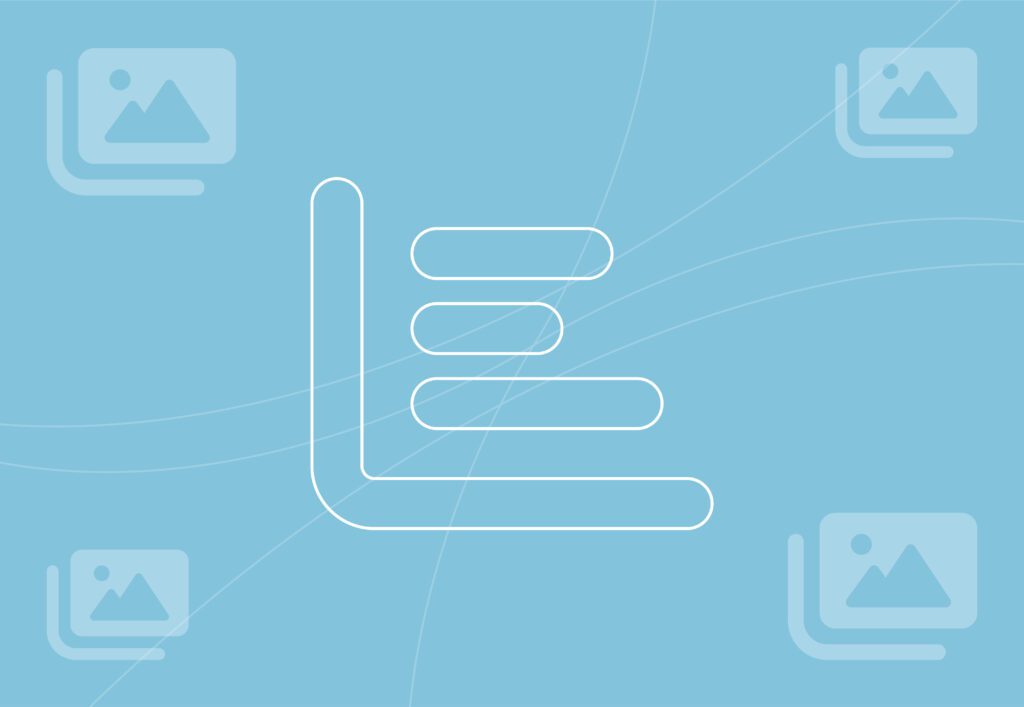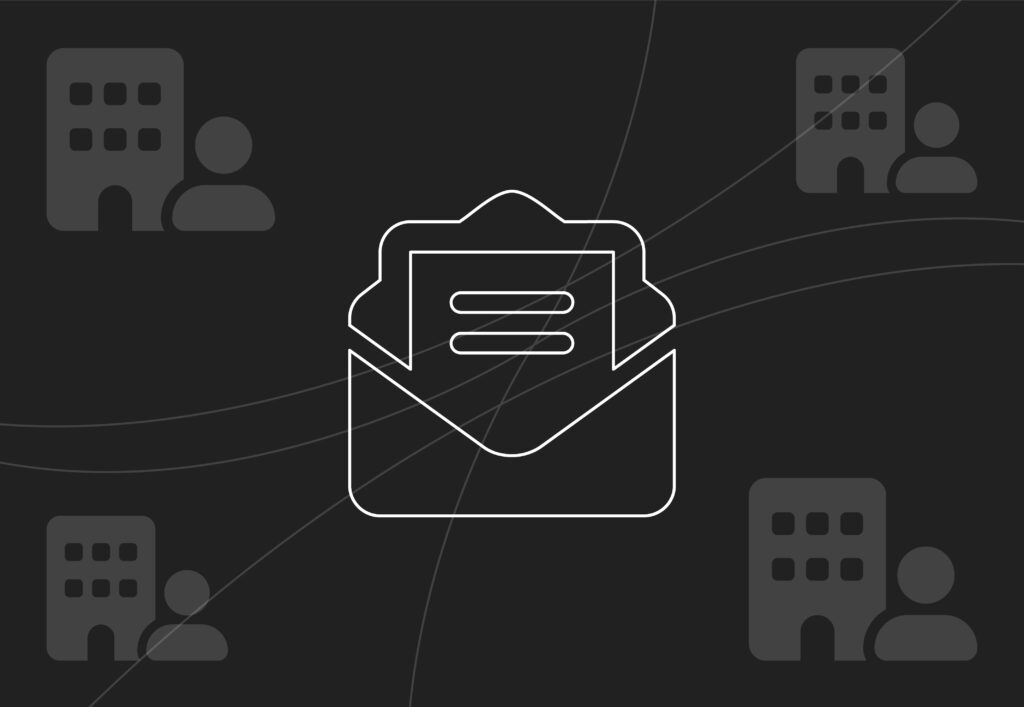
87 stats to help you create your paid media strategy

What is paid media?
Paid media, often referred to as paid advertising, encompasses all forms of marketing where a business pays to place their content directly in front of a targeted audience.
It is a great way to expand your customer base and get your business in front of specific types of prospects. Paid media is different from owned media and earned media.
Owned media refers to assets you directly control, such as your website, blog, and email list. Whereas Earned media is organic promotion generated by others, such as social media mentions, press coverage, and customer reviews.
Paid media can cover anything from PPC campaigns, social media ads, banner ads, video ads, audio ads, affiliate marketing, and influencer partnerships.
Why is paid media so effective?
Controlled targeting
The defining characteristic of paid media is the control it grants you over targeting parameters, timing, and budget allocation. This precision makes it an extremely valuable component of a well-rounded and effective marketing strategy.
Quick results
Reaching your audience takes time and effort. Strategies like search engine optimisation (SEO) and content marketing drive long-term growth but require sustained investment before delivering significant results. In contrast, paid media provides an immediate way to expand reach, precisely target key demographics, and accelerate marketing outcomes.
Wider reach
Paid media allows you to extend your reach far beyond your existing audience and connect with a wider pool of potential customers. By strategically placing your ads on platforms where your target audience spends their time, you can significantly increase your brand visibility and reach new markets.
Data-driven marketing
Paid media campaigns offer robust tracking and analytics capabilities. You can measure the effectiveness of your efforts, optimise your campaigns in real time, refine your targeting, and continuously improve your results.
Scale for growth
Depending on your business goals and advertising needs, paid media campaigns can be scaled up or down to suit your needs.
Full-funnel marketing
Paid media covers a huge variety of channels and can use data to target all parts of the marketing funnel.
Creative testing
The results from A/B testing not only allow you to achieve better results but can show you a lot about your target audience. Using A/B tests is a great way to remove your assumptions about your target audience and build accurate data that you can then base your marketing decisions on.
Types of paid media that Embryo offers
Among the organic digital marketing goals that many businesses have, here at Embryo we also offer multiple different services for paid media campaigns.
Paid social allows businesses to run ads on Facebook, Instagram, LinkedIn, Pinterest and TikTok and will increase your reach. In simple terms, your brand will be put in front of more people.
What you need to consider is that your audience on these social platforms are not necessarily in the market for your product. In comparison to organic and search-based marketing, this gives you the opportunity to reach potential customers before they even consider making a purchase. A user may not know that they want new trainers until they see your ad showing a really nice pair of trainers. Here you can kick off the customer journey, rather than just being a part of it. This element alone allows you to build up a new customer base unlike any other platform.
PPC
Have you ever googled a product and found that a selection of sponsored ads has appeared at the top of your search results? This is PPC in action.
PPC is one of the best ways to create conversions and increase your traffic, especially when used as part of a more comprehensive digital marketing strategy.
When your chosen terms and keywords are searched on Google, your advert has the chance to appear at the very top of the search results.
Then, when someone clicks on your ad, you pay a bidding fee – the higher your bids, the higher up your company will be in the search results.
Affiliate marketing
Affiliate marketing is a performance-based channel in which a publisher is awarded a commission for their part in generating a sale for an advertiser.
This digital marketing service enables brands to effectively market a product or service, whilst reaching new audiences and growing brand recognition, building customer loyalty and lifetime value
What to consider when creating a paid media strategy

1. Narrow down your audience
Narrowing down your audience can be tricky, as you might already have some perceived factors of what groups your audience sit in, but how do we know if this is accurate?
And if you have no previous data to work with, then you won’t really know who is buying your products at all.
To get the best out of a paid media campaign, you need to be thinking about audience age, gender, interests, behaviours, demographics etc.
The beauty of most paid media campaigns, is that there is a huge learning period at the start, where your campaign will track and collect who is interacting with your ads, and which people are converting. Allowing for tweaks, optimisations, more accurate targeting, and improved campaign performance.
Stats on searches of a UK audience:
- Google’s market share in the UK search engine market is 93.51% (The Social Shepherd).
- Google Ads allows targeting by Age (18-24, 25-34, 35-44, 45-54, 55-64, 65+, Unknown) (Google Ads Help).
- Google Ads allows targeting by Gender (Female, Male, Unknown) (Google Ads Help).
- Google Ads allows targeting by Parental Status (Parent, Not a parent, Unknown) (Google Ads Help).
- Google Ads allows targeting by Household Income in some countries (e.g., Top 10%, 11-20%, 21-30%, 31-40%, 41-50%, Lower 50%) (Google Ads Help). Note: This is available in specific countries; check Google Ads for UK availability.
- 79% of the UK population uses social media as of early 2025 (Talkwalker).
- UK adults spend an average of 5 hours 36 minutes browsing online daily (Talkwalker).
- 97.8% internet penetration in the UK at the start of 2024 (DataReportal).
- 50.6% of the UK’s population is female, while 49.4% is male (DataReportal 2024).
- Median age of the UK population is 40.2 (DataReportal 2024).
- Google Ads allows for demographic targeting by household income (e.g., Top 10%, 11-20%, etc.) (Google Ads Help).
(Sources: The Social Shepherd, Talkwalker, Google ads)
Knowing your audience is one battle, but knowing where you will find them is the next. Choosing the right platform to put your ads on will have a huge impact on the success of your paid campaigns.
Firstly for search and PPC campaigns, we might think that Google is the obvious answer, which it is always a strong platform to go with. However, with the changing landscape of search, we need to be more aware of the platform-centric search behaviours, and consider that users now might be going to Amazon, Reddit, YouTube or Instagram for their search queries.
Social media is a huge part of paid campaigns, and is spread across a handful of very different platforms.
A very vague example, but if you are selling beauty products through short video and influencer marketing, then TikTok might be your place to go.
Whereas a campaign focused on recruitment tactics and HR tech, would perform much better over on LinkedIn.
Let’s take a look at some audience and demographic data for some key social platforms.
- Active social media users in the UK typically engage with about 6.4 platforms monthly (Talkwalker).
- UK adults spend an average of 1 hour 37 minutes using social media platforms daily (Talkwalker).
- 90.9% of UK adults aged 18+ use social media as of early 2024 (DataReportal).
- 49.9% of UK social media users are female, while 50.1% are male (DataReportal).
- 17.8% of social media users follow their favorite brands (VeraContent).
- 15.4% of social media users follow influencers or celebrities (VeraContent).
- Younger users (16-24) are more likely to follow influencers, while older users tend to follow companies or brands (VeraContent).
- 50% of social media users in the UK want to select the advert topics they are shown (Talkwalker).
- 64% of all online display spend in the UK is now invested in video, up from 51% five years ago (IAB UK 2024).
- Young adults (18-24) spend the most time online, averaging 6 hours and 1 minute daily (Sprout Social).
- Those aged 65+ spend the least time online, at 3 hours and 10 minutes daily (Sprout Social).
- 97-98% of Gen Z and Millennial internet users are reached by social media (Talkwalker).
Facebook stats:
- 53.0% of Facebook’s ad audience in the UK was female in early 2024, while 47.0% was male (DataReportal).
- Facebook’s appeal among younger audiences is waning; users aged 18-24 spend an average of just 15 minutes per day on the platform (Sprout Social).
Instagram stats:
- 55.4% of Instagram’s ad audience in the UK was female in early 2024, while 44.6% was male (DataReportal).
- Instagram’s popularity is strong among 18-34-year-olds, making it a crucial platform for brands targeting this demographic (Sprout Social).
- Instagram has overtaken YouTube and Facebook to become the second-most-visited smartphone app among 18-34-year-olds (Sprout Social).
TikTok and YouTube stats
- 50.2% of TikTok’s ad audience in the UK was female in early 2024, while 49.8% was male (DataReportal).
- TikTok had 24.8 million users aged 18+ in the UK in early 2025 (Sprout Social).
- The average daily usage of TikTok for UK adults is 13 minutes, but this increases to 64 minutes per day for 18-24-year-olds (Sprout Social).
- 49.9% of YouTube’s ad audience in the UK was female in early 2024, while 50.1% was male (DataReportal).
(Sources: Talkwalker, Data Reportal, Sprout Social, IAB UK)
3. Determine your budget

Now that you know who you are targeting, and which platforms you think campaigns would be a success on, its time to decide what budget you want to allocate to these campaigns.
As a campaign runs, many automated features built into platforms like Google ads can do a lot of the work for you by automating your bidding based on performance.
Working with an agency also means you have that extra level of advice and support to optimise your budget and ad spend.
Lets look at some stats on paid media spend and budgeting
- Search advertising accounted for two in five pounds (£16.9 billion) spent on advertising in the UK in 2024 (Advertising Association/WARC).
- Search ad spend is forecast to grow by 8.2% in 2025 (Advertising Association/WARC).
- Social media accounted for 53% of overall online display ad spend in the UK in 2024 (Advertising Association/WARC).
- Annual social media advertising spend is now £9.02 billion (We Are Social).
- Meta recommends dedicating 20-30% of your platform budget to full-funnel paid campaigns (The Graygency).
- The “70-20-10 rule” suggests allocating 70% of budget to proven channels, 20% to promising new channels, and 10% to experimental ones (Wildcat Digital, The Graygency).
- Influencer marketing investment in the UK hit £930 million in 2024, an increase of 13.6% year-on-year (We Are Social, 2025 data).
- Video display ad spend grew 20% to £8.3 billion in 2024 (IAB UK).
- Most established small businesses in the UK should expect to spend £500 to £3,000 per month on a combination of digital marketing (Yopp.co.uk).
- Small businesses should aim for 5-10% of their revenue as a marketing budget (Yopp.co.uk).
- Mid-level businesses looking to grow might spend £1,000-£2,500 per month (Yopp.co.uk).
- High-growth businesses in competitive industries could spend £2,500-£5,000+ per month on a total marketing budget (Yopp.co.uk).
- It’s recommended to start PPC with a test budget of £500-£1,000 per month and scale up (Yopp.co.uk).
- B2B PPC average yearly spend is between £96K-£102K ($115K-$122K) (Search Engine Land, via Beyond Your Brand).
- The average CPC across industries rose by 10% in 2024 (Search Engine Land).
- The average Cost per Click (CPC) for Facebook ads is around £1.55 ($1.86) (Vertical Leap, via Beyond Your Brand).
- Instagram average CPC: £3.15 (Expert Market).
- LinkedIn average CPC: £4.65 (Expert Market).
- 96% of marketers spend money on search ads (The State of PPC, via Beyond Your Brand).
(Sources: Advertising Association, We Are Social, The Graygency, Yopp, Expert Market )
4. Think about your creative
As many marketers have come to realise, the creative of your ad is what drives a lot of its success.
Colours, CTA’s, copy, interactivity, font, images, animation, and video elements (and more) are all things to consider when creating copy for your paid media campaigns.
Sticking to brand guidelines is also super important when creating multiple assets. You want users to be able to recognise the consistency in your marketing, which then makes your brand recognisable no matter what platform you advertise on.
- 65-70% of a campaign’s success is determined by creative execution (Deviceful).
- 80% of B2B marketers say they need to invest in creative strategies to stand out (LinkedIn, 2025).
- Carousel ads on platforms like Facebook and Instagram tend to have higher engagement and click-through rates due to their interactive format (Foreplay).
- Advertisers considering video ads as most effective social ad format: 32% (Cropink).
- Display ads are considered the least effective by over 43% of marketers, yet over 84% still invest in them, indicating a need for better creative (Cropink).
- 59% of searches, 70% of search ad impressions, and 52% of PPC clicks come from mobile devices, necessitating mobile-first creative (Cropink).
- Personalized campaigns can help increase marketing ROI by 10-30% (StackAdapt).
- 57% of UK consumers describe AI-generated content as ‘impersonal’ and ‘repetitive,’ highlighting the need for human oversight in creative (CMOtech UK).
- 92% of people trust earned media (including UGC) more than traditional ads (Kolsquare).
- Companies implementing regular A/B testing of ad creatives achieve up to 25% higher conversion rates and significantly reduced cost per acquisition (Sortlist Blog).
- Google recommends using both video and image assets in Demand Gen campaigns, as those with both saw 20% more conversions at the same CPA than video-only (Cropink).
- Dedicated PPC landing pages convert 65% better than general website pages, requiring consistent creative messaging (Digital Silk).
(Sources: Deviceful, Cropink, Stack Adapt, Digital Silk)
5. Prep your content and copy
Yes, it important to make sure that your ad looks nice. But it is just as important to put real effort into what your ad is trying to say and convey. The length, work choice, placement and CTA’s all have a hige impact on the conversion rate of your paid media.
Ad copy length
- 65-70% of a campaign’s success is determined by creative execution, which includes ad copy (Deviceful).
- For informational content, 12-14 word ads often strike a good balance between reading length and information (Anyword Blog).
- Facebook News Feed (Mobile): People spend an average of 1.7 seconds on a piece of content, demanding concise messages (LeadsBridge).
- Facebook Ad Copy Best Practice: Aim for 125 characters or less for primary text to ensure visibility on mobile without truncation (LeadsBridge, Strike Social, LeadSync).
- Instagram Captions (Paid): While organic captions can be long, paid ad copy should be concise to complement visuals effectively. Recommended around 125 characters (Strike Social).
- TikTok Paid Copy: Limited to 100 characters (including punctuation), with a focus on quick-hitting content (Ignite Social Media).
CTA’s
- 90% of visitors who read a page headline also read the CTA copy (Sender.net).
- Clear, specific CTAs can boost conversion rates by up to 161% (Sender.net, Wiser Notify).
- Social media ads with clear CTAs have a 285% higher CTR than those with ambiguous ones (Wiser Notify).
- Video CTAs (embedding CTAs within videos) can help attract 380% more clicks (Sender.net).
- Action-oriented language can increase conversions by 121% compared to passive wording (Sender.net).
- First-person phrasing like “Start My Free Trial” can boost click-through rates by 90% (Sender.net).
- Urgency cues (e.g., “only 3 left,” “limited time”) can increase conversions by 332% (Sender.net).
(Sources: Sender.net, Wiser Notify)
6. Launch and analyse

Data analysis
- Data-driven campaigns generate 5 to 8 times higher ROI compared to non-data-driven ones (Forbes, general data).
- 93% of marketers agree that data is the key to understanding customer journeys (Deloitte).
- Companies that are ‘data-driven’ are 6x more likely to retain customers (McKinsey).
- Conversion rate for Google Ads averages 6.96% in 2024 in the UK (Reboot Online).
- Google Ads CTR averages 7.37% in 2024 in the UK (Reboot Online).
- The average cost for PPC management in the UK is between £799 and £2,394 per month (Reboot Online), with reporting being a key part of this service.
Retargeting
- Google Display Network requires a minimum of 100 active visitors within the last 30 days for remarketing lists (Google Ads Help).
- Retargeted users are 43% more likely to convert than first-time visitors (Cropink).
- Retargeted ads boost brand recall and engagement by 45% (Cropink).
- Retargeting reduces cart abandonment by 26%, leading to higher purchases (Cropink).
- Retargeting campaigns see an average CTR of 0.7%, nearly 10x higher than standard display ads (Cropink).
(Sources: Forbes, Reboot online, Cropink)
How can Embryo help?
This guide, backed up with plenty of stats for thought, highlights the effectiveness of paid media in expanding your customer reach and accelerating your marketing outcomes. Unlike owned or earned media, paid advertising offers controlled targeting, quick results, wider reach, and invaluable data for optimisation.
Developing a successful paid media strategy involves defining your audience (using demographics like age, gender, and interests), selecting appropriate platforms based on where your target audience spends time, and establishing a suitable budget. There is an increasing importance for quality creative, including compelling visuals and concise ad copy with clear call to actions. Continuous data analysis and A/B testing are crucial for optimising your campaigns, understanding audience behaviour, and maximising ROI, leveraging insights from performance metrics and retargeting efforts.
Take a look at our PPC and paid social pages on our site to get a deeper understanding of how Embryo could help kickstart your paid media marketing efforts.



